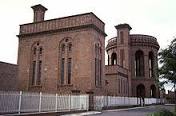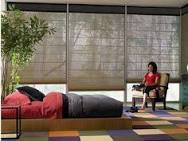sash blinds kirkstall

As part of our ongoing efforts to improve our customers' experience, we're delighted to introduce our new website. we hope you like it and ARE ALWAYS GRATeFUL for any feedback. Check Out Our New Bathroom Lights Range >View Our Glass Pendants >Our New Autumn/Winter Collection > Door Handle Clearance > Liverpool is a city and port in Merseyside, England, which contains many listed buildings. A listed building is a structure designated by English Heritage of being of architectural and/or of historical importance and, as such, is included in the National Heritage List for England. There are three grades of listing, according to the degree of importance of the structure. Grade I includes those buildings that are of "exceptional interest, sometimes considered to be internationally important"; the buildings in Grade II* are "particularly important buildings of more than special interest"; and those in Grade II are "nationally important and of special interest". Very few buildings are included in Grade I — only 2.5% of the total.

Grade II* buildings represent 5.5% of the total, while the great majority, 92%, are included in Grade II. Liverpool contains more than 1,550 listed buildings, of which 28 are in Grade I, 109 in Grade II*, and the rest in Grade II.[a] This list contains the Grade II listed buildings in the L6 postal district of Liverpool. The postal district contains the suburb of Fairfield, and part of Everton, once a separate village, later absorbed by the expansion of Liverpool to become another suburb. The district is mainly residential, and most of the listed buildings are houses, or associated structures. Also listed are a hospital and its associated buildings, a waterworks, a former chapel, a bandstand, a war memorial, a drinking fountain, and a pillar box. Grade II listed buildings from other areas in the city can be found through the template on the right, along with the lists of the Grade I and Grade II* buildings in the city. South building, Water Works ^ a b Pollard & Pevsner (2006), p. 426

^ a b c Pollard & Pevsner (2006), p. 425 ^ Pollard & Pevsner (2006), p. 420 ^ Pollard & Pevsner (2006), p. 424 ^ a b c d e f g h i j Pollard & Pevsner (2006), p. 423The page you have requested can not be found or has been moved. Please follow one of the links below to continue or click here to return to our homepage.If you log in, you can comment on buildings, submit new photos or update photos that you've already submitted. We need to upgrade the server that this website runs on. Can you spare a quid to help?. Shadwell Grange, Stable Cottage and Shadwell Grange Farmhouse, Leeds Description: Shadwell Grange, Stable Cottage and Shadwell Grange FarmhouseGrade: IIDate Listed: 5 August 1976English Heritage Building ID: 465277OS Grid Reference: SE3279339872OS Grid Coordinates: 432793, 439872Latitude/Longitude: 53.8541, -1.5029 Location: 400 Shadwell Lane, Leeds LS17 6DPLocality: LeedsCounty: LeedsCountry: EnglandPostcode: LS17 6DP Listing TextSE 33 NW LEEDS SHADWELL LANE, Shadwell

Shadwell range, Stable Cottage 05.08.1976 Cottage and Shadwell Grange Large house, farmhouse, cottage, barns, outbuildings.
louvolite slimline vertical blindsFarmhouse and buildings c1810, large house 1821-31 for Stephen Nicholson with alterations and extension 1903 for Henry Barran.
abacus blinds felixstoweCoursed squared tooled gritstone, ashlar details, stone slate roofs to farm, slate roof to later house.
sash blinds kirkstallU-plan farm complex, open to south, with farmhouse in NE corner and large house added to SW. Shadwell Grange: 2 storeys, 5x5 bays; garden front has central full-height bow with 3 sash windows to each storey, sashes with glazing bars to ground floor, 16-pane sashes above, 1st-floor band, band at eaves level and 1903 parapet and central pediment.

Left return, entrance facade: central entrance bay of 1903 has double doors, traceried overlight, rusticated surround, pilasters and pediment with heraldic crest above, glazing bars and 16-pane sashes, 2 blind panels right. Set back, left: 2-storey service wing/outbuildings range; roof steps up to 4-window range with side-sliding sashes and C20 small-pane frames, plain lintels and sills, and passage to rear yard. North-facing facade: central former courtyard entrance range, now garage and farm store, of 2 storeys, 3 bays, end copings, central pedimented bay breaks forward with segmental arch to ground floor and keyed lunette opening in gable; distinctive square windows to upper storey have side-sliding sashes and projecting sills and lintels grooved as though for sliding external shutters. To right: Stable Cottage is part of the 4-window continuation of the west-facing service wing: plain lintel, sash with small-pane frame to right. Left of pedimented range: farmhouse rear wing has three 1st-floor windows with sliding shutters, 2 of them blocked;

small ground floor openings and a taller sash stair window. There are 2 single-storey ranges attached to this facade: a former cart shed and a small farmhouse service bay. East-facing facade: Shadwell Grange Farmhouse of 2 storeys and 4 bays, right, has wooden architrave and plain stone lintel to entrance, flanked by sashes with glazing bars, far left a low segmental cart arch (access to rear farm yard). Centre of this range: a barn with tall segmental keyed arch, byre door left, 3 square openings above, now glazed, have rebated surrounds for shutters. Far left: a barn with lower roof, low segmental cart arch, window right, loading door above. The farmyard facades include inner arch to entrance (garage) range and distinctive tapered pilasters built of large blocks on the rear walls of Shadwell Grange Farmhouse. Contemporary range of single-storey farm buildings in yard are included, on line of division between Grange and Farmhouse. HISTORICAL NOTE: Kirkstall Abbey owned a total of 19 acres of land in Shadwell by c1195 and in 1333 and 1334 John de Shepley sued the Abbot of Kirkstall for 80 acres.

Shadwell Moor Farm was built by a Leeds mill owner shortly after the enclosure of Shadwell Moor in 1803 and 1806. In 1821 the then Lord of the Manor, Stephen Nicholson (of Roundhay Park), bought the estate and built Shadwell Grange by 1831, possibly taking the name from associations with Kirkstall Abbey lands, but there is no evidence as to date. By 1841 the property was occupied by David Cooper and family and the farm had been renamed Shadwell Grange Farm. Occupiers in 1871-72 were C Empson and Elizabeth Shaw. In 1903 the property was owned by Henry Barran, son of the important Leeds clothing manufacturer, John Barran. He had alterations made, including entrance bay with family badge of a bear, a pun on the Barran name. The pilasters on the rear wall of Shadwell Grange Farmhouse are similar to those at Nos.1-7 Park Cottages, Mansion Lane, Roundhay (qv), also the property of Stephen Nicholson. This text is a legacy record and has not been updated since the building was originally listed.